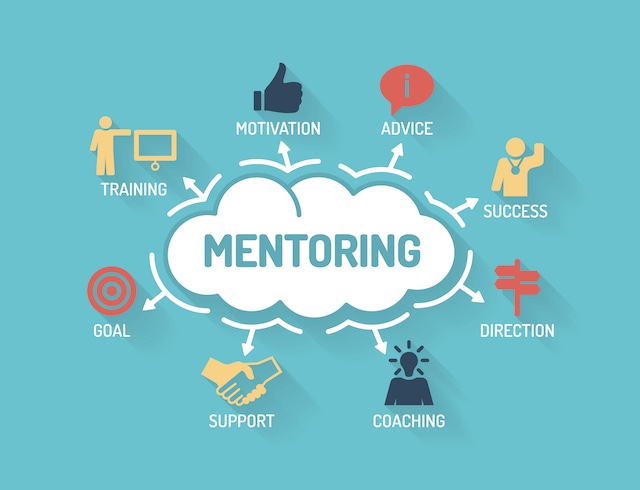Workplace mentoring is a professional relationship in which a less experienced employee (the mentee) receives guidance, support, and advice from a more experienced or knowledgeable colleague (the mentor). This relationship goes beyond teaching the skills specific to a particular role; it focuses on employee career development, personal growth, and helping the mentee navigate challenges in their professional journey. Mentorships in the workplace can be formal, structured through an organization’s program, or informal, where connections develop naturally. At its core, mentoring fosters collaboration, trust, and knowledge-sharing, benefiting individuals at all job levels.
Why Is Mentoring in the Workplace Important?
For businesses, mentoring is a powerful tool to drive employee engagement, retention, and productivity. Employees who feel that their growth is supported are more likely to stay loyal, contribute meaningfully, and develop into strong leaders. This is because mentoring provides opportunities for employees to gain valuable insights, accelerate skill development, and build confidence in their roles. Beyond individual growth, mentorship programs cultivate a culture of continuous learning and inclusivity, fostering stronger workplace relationships. Ultimately, mentoring creates a win-win scenario where the organization and its employees thrive together.
5 Types of Workplace Mentoring
Here are five common types of workplace mentoring:
1. One-on-one mentoring
In one-on-one mentoring, a single mentor is paired with a single mentee. This relationship allows for personalized guidance tailored to the mentee’s specific needs and career goals. The mentor provides regular support, shares expertise, and offers constructive feedback, creating a trusting and focused environment. When used for high-potential employees, it can also be part of a succession planning strategy. This is one of the most traditional and effective forms of mentoring, fostering a strong bond between the participants.
2. Group mentoring
Group mentoring involves one mentor working with multiple mentees at the same time. This setup encourages collaborative learning and shared experiences, as mentees can learn not only from the mentor but also from their peers. It is particularly useful when addressing common challenges or skill-building needs within a team or department.
3. Peer mentoring
Peer mentoring pairs employees at similar career levels to provide mutual support and guidance. This type of mentoring is beneficial for sharing experiences, problem-solving, and building camaraderie among team members. Peer mentoring can help reduce isolation in the workplace and create a sense of community, especially in larger organizations.
4. Reverse mentoring
Reverse mentoring flips the traditional dynamic by having a junior or less experienced employee mentor a more senior or experienced colleague. This type of mentorship in the workplace is particularly valuable for sharing knowledge about new technologies, social media trends, or cultural shifts. It promotes mutual learning, helping organizations stay innovative and adaptive.
5. Situational mentoring
Situational mentoring is short-term and focuses on addressing a specific challenge, goal, or project. A mentor with expertise in a relevant area provides targeted advice and support for the duration of the situation. This approach is particularly effective for employees tackling new roles, navigating transitions, or working on critical projects.

How to Implement Mentoring Programs in the Workplace
To implement a mentorship program in the workplace, there are several variables you should identify and prepare for beforehand.
- Identifying the program’s purpose and align it with organizational goals, such as employee development, leadership cultivation, or onboarding support.
- Gain leadership buy-in by demonstrating how mentoring can improve employee engagement, retention, and overall performance.
- Design the program structure:
- The type of mentoring (e.g., one-on-one, group, or reverse mentoring)
- Program duration
- Meeting frequency
- Communication methods
- Establish clear criteria for selecting and pairing mentors and mentees, considering factors like experience, skills, and career goals.
- Provide training for mentors to ensure they understand their role and can offer effective guidance.
- Define expectations of the program so that you’re able to measure its success.
- Make support resources available to participants.
Mentoring: The Key to a Thriving Workplace
Mentoring in the workplace is a vital investment in both people and the organization. By fostering collaboration, knowledge-sharing, and personal growth, mentorships empower employees to achieve their full potential while driving business success. It enhances employee satisfaction, strengthens leadership pipelines for succession planning, and creates a culture of continuous learning and support. For businesses, mentoring is a strategic tool to build a resilient, skilled, and motivated workforce, ensuring long-term success in a competitive landscape.
For additional ways to support the growth of your employees and managers, INTOO offers a variety of programming, including career coaching, employee training programs and workshops, and leadership training. Contact us today to learn how we can help.











